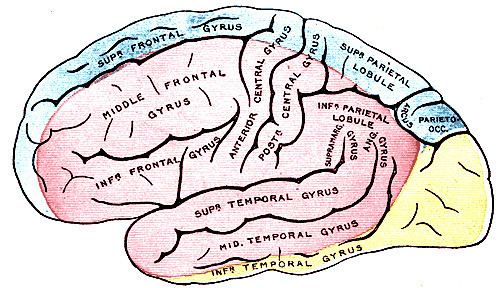Vein cerebral veins MeSH A07.231.114.228.100 | Supplies cerebrum TA A12.2.07.022 | |
 | ||
Latin arteria cerebri anterior | ||
The anterior cerebral artery (ACA) is one of a pair of arteries on the brain that supplies oxygenated blood to most midline portions of the frontal lobes and superior medial parietal lobes. The two anterior cerebral arteries arise from the internal carotid artery and are part of the circle of Willis. The left and right anterior cerebral arteries are connected by the anterior communicating artery.
Contents
Anterior cerebral artery syndrome refers to symptoms that follow a stroke occurring in the area normally supplied by one of the arteries. It is characterized by weakness and sensory loss in the lower leg and foot opposite to the lesion and behavioral changes.
Structure
The anterior cerebral artery is divided into 5 segments. Its smaller branches: the callosal (supracallosal) arteries are considered as the A4 and A5 segments.
Development
The anterior cerebral artery develops from a primitive anterior division of the internal carotid artery that initially supplies the optic and olfactory regions. This anterior division, which appears at the twenty-eighth day of development, also forms the middle cerebral artery and the anterior choroidal artery. The anterior cerebral arteries grow toward each other and form the anterior communicating artery at the 21–24 mm stage of the embryo.
Variation
The anterior cerebral artery shows considerable variation. In a study made using MRA, the most common variation was an underdeveloped A1 segment (5.6%), followed by the presence of an extra A2 segment (3%). In 2% of cases there was only one A2 segment.
Function
The anterior cerebral artery supplies a part of the frontal lobe, specifically its medial surface and the upper border. It also supplies the front four–fifths of the corpus callosum, and provides blood to deep structures such as the anterior limb of the internal capsule, part of the caudate nucleus, and the anterior part of the globus pallidus.
Occlusion
Strokes that occur in a part of the artery prior to the anterior communicating usually do not produce many symptoms because of collateral circulation. If a blockage occurs in the A2 segment or later, the following signs and symptoms may be noted:
